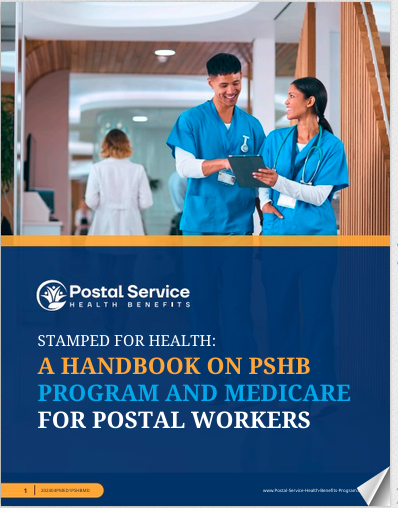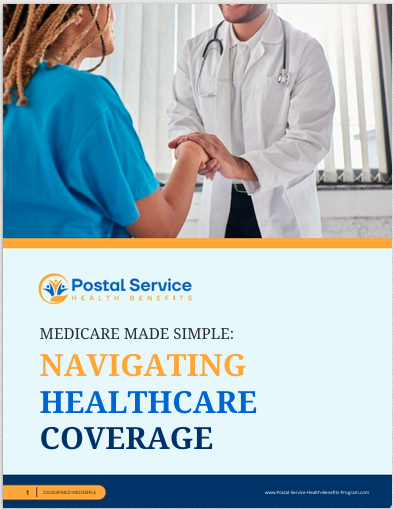Key Takeaways
-
Starting in 2025, all USPS employees and retirees must enroll in a Postal Service Health Benefits (PSHB) plan to maintain their health coverage.
-
Medicare-eligible annuitants and family members must enroll in Medicare Part B to keep PSHB coverage, unless they meet one of the approved exemptions.
Major Shift in USPS Health Coverage for 2025
The health coverage system you may have relied on for decades is undergoing a significant transformation in 2025. The new Postal Service Health Benefits (PSHB) Program replaces your old Federal Employees Health Benefits (FEHB) plan if you’re a USPS employee, retiree, or eligible family member. This change follows the Postal Service Reform Act of 2022, which mandates the switch to a separate health benefits program tailored for USPS members.
If you’re currently enrolled in FEHB and connected to the Postal Service, you now fall under a new set of requirements. It’s essential to understand how your benefits, enrollment, and Medicare coordination are affected.
Who Needs to Pay Attention
You should carefully review your status if you are:
-
A current USPS employee enrolled in an FEHB plan
-
A USPS annuitant or retiree, including family members covered under your plan
-
Medicare-eligible or turning 65 soon
What Is the PSHB Program?
The PSHB Program is a new health insurance marketplace specifically for Postal Service employees, retirees, and eligible family members. While it mirrors the structure of FEHB in many ways, it functions as a separate system with its own plans, rules, and requirements.
Here’s what defines the PSHB system:
-
Administered by the U.S. Office of Personnel Management (OPM)
-
Offers a variety of plans similar in scope to FEHB but tailored for USPS
-
Premiums partly covered by the government (approximately 70% contribution remains standard)
-
Must be used starting January 1, 2025, for all USPS health coverage
Timeline to Remember
You’ve likely already received your notification about this change, but here are some critical timeframes to keep in mind:
-
Special Enrollment Period for Medicare Part B: April 1 to September 30, 2024
-
PSHB Open Season: November to December 2024
-
Coverage Start Date: January 1, 2025
If you missed the Medicare enrollment window and don’t qualify for an exemption, you may lose your eligibility for drug coverage under PSHB.
Medicare Part B Enrollment Requirement
One of the most significant changes affecting retirees is the mandatory enrollment in Medicare Part B for those who are eligible. Unless you fall under a specific exemption, you must be enrolled in Part B to keep your PSHB plan active in retirement.
Who Needs to Enroll in Part B?
-
Medicare-eligible annuitants and family members
-
Those retiring after January 1, 2025
Who Is Exempt?
-
Annuitants who retired on or before January 1, 2025
-
Active USPS employees aged 64 or older as of January 1, 2025
-
Residents living abroad
-
Veterans receiving health coverage through the VA
-
Beneficiaries of Indian Health Services
If you’re exempt, you can still enroll in a PSHB plan without enrolling in Medicare Part B.
Prescription Drug Coverage Through Medicare Part D
Another critical component of PSHB is how it integrates with Medicare Part D. If you’re enrolled in Medicare Part B and select a PSHB plan, you will automatically receive drug coverage through a Part D Employer Group Waiver Plan (EGWP).
Highlights of the EGWP:
-
No separate enrollment is required
-
Includes a $35 monthly insulin cost cap
-
$2,000 annual out-of-pocket maximum for prescription drugs
-
Access to a broader pharmacy network
Opting out of this prescription drug coverage will result in the loss of drug benefits under PSHB. Re-enrollment opportunities will be limited, so the decision is critical.
What Happens if You Do Nothing?
If you’re already enrolled in an FEHB plan as a USPS employee or annuitant, you will be automatically enrolled in a similar PSHB plan for 2025. This automatic process aims to ensure no disruption in your health coverage.
However, automatic enrollment may not guarantee the best plan for your needs. You should still compare your options during the Open Season to confirm your current plan fits your situation, especially if your health needs have changed.
Key Differences from FEHB
Although the PSHB program mirrors many aspects of FEHB, some differences may impact your decision-making:
-
Eligibility Rules: Tied specifically to USPS employment or annuitant status
-
Medicare Part B Requirement: Mandatory for many retirees
-
Integrated Drug Coverage: Automatically included under EGWP
-
Plan Selection: Unique PSHB plans, some of which may differ in cost-sharing structures
Financial Implications You Should Consider
With premiums, copayments, and coinsurance rates varying by plan, you should review the PSHB options closely to evaluate your potential out-of-pocket costs. In 2025, average monthly premiums fall within general ranges:
-
Self Only: $120–$200
-
Self Plus One: $250–$400
-
Self and Family: $350–$550
Government contributions still cover around 70% of total premiums. Copayments range from $20 to $150 depending on service type, and deductibles vary based on your chosen plan and coverage level.
For retirees with Medicare Part B, many plans offer:
-
Waived or reduced deductibles
-
Lower out-of-pocket costs
-
Enhanced pharmacy benefits
Coordination With Other Federal Benefits
The transition to PSHB does not affect other benefits you may rely on:
-
FEDVIP (Dental/Vision): Still available and unchanged
-
FEGLI (Life Insurance): Unaffected
-
FLTCIP (Long-Term Care): Still suspended for new enrollees but valid for current policyholders
-
FSAFEDS (Flexible Spending Accounts): Still applies to active employees, not annuitants
Enrollment Portals and Resources
To review, compare, or change your health plan, use the appropriate portal:
-
USPS Employees: Use LiteBlue
-
USPS Retirees: Use KeepingPosted.org
For additional assistance:
-
PSHB Navigator Help Line: 1-833-712-7742
-
OPM Website: Provides brochures and plan comparisons
What You Need to Do Right Now
-
If you’re eligible for Medicare and not yet enrolled in Part B, act immediately.
-
Watch for Open Season in November and compare your PSHB options.
-
Evaluate how your current plan compares with new PSHB choices.
-
Confirm your automatic enrollment or make changes as needed.
Your Health Coverage Path Forward
As a USPS employee or retiree, the move to the PSHB Program marks a permanent shift in how your health benefits are managed. Understanding the new structure, deadlines, and requirements helps you make informed decisions that affect your healthcare access and out-of-pocket costs.
Take the time now to review your Medicare status, compare plan options, and consult your eligibility for exemptions. Your actions in 2024 and 2025 directly shape your health coverage experience moving forward.
For more personalized help, speak with a licensed agent listed on this website to walk through your options.






